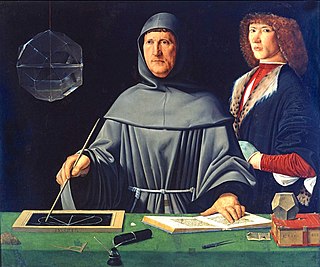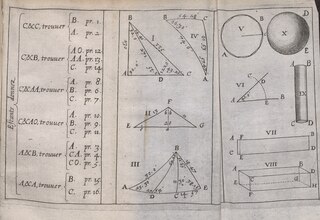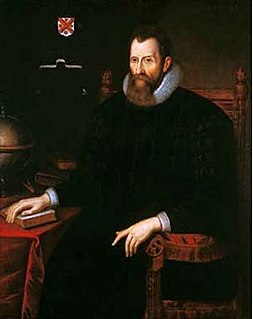
Diophantus of Alexandria was an Alexandrian Hellenistic mathematician, who was the author of a series of books called Arithmetica, many of which are now lost. Sometimes called "the father of algebra", his texts deal with solving algebraic equations. While reading Claude Gaspard Bachet de Méziriac's edition of Diophantus' Arithmetica, Pierre de Fermat concluded that a certain equation considered by Diophantus had no solutions, and noted in the margin without elaboration that he had found "a truly marvelous proof of this proposition," now referred to as Fermat's Last Theorem. This led to tremendous advances in number theory, and the study of Diophantine equations and of Diophantine approximations remain important areas of mathematical research. Diophantus coined the term παρισότης (parisotes) to refer to an approximate equality. This term was rendered as adaequalitas in Latin, and became the technique of adequality developed by Pierre de Fermat to find maxima for functions and tangent lines to curves. Diophantus was the first Greek mathematician who recognized fractions as numbers; thus he allowed positive rational numbers for the coefficients and solutions. In modern use, Diophantine equations are usually algebraic equations with integer coefficients, for which integer solutions are sought.

Fra Luca Bartolomeo de Pacioli was an Italian mathematician, Franciscan friar, collaborator with Leonardo da Vinci, and an early contributor to the field now known as accounting. He is referred to as "The Father of Accounting and Bookkeeping" in Europe and he was the first person to publish a work on the double-entry system of book-keeping on the continent. He was also called Luca di Borgo after his birthplace, Borgo Sansepolcro, Tuscany.

In mathematics, the common logarithm is the logarithm with base 10. It is also known as the decadic logarithm and as the decimal logarithm, named after its base, or Briggsian logarithm, after Henry Briggs, an English mathematician who pioneered its use, as well as standard logarithm. Historically, it was known as logarithmus decimalis or logarithmus decadis. It is indicated by log10(x), or sometimes Log(x) with a capital L. On calculators, it is usually "log", but mathematicians usually mean natural logarithm rather than common logarithm when they write "log". To mitigate this ambiguity, the ISO 80000 specification recommends that log10(x) should be written lg (x) and loge(x) should be ln (x).
Henry Briggs was an English mathematician notable for changing the original logarithms invented by John Napier into common logarithms, which are sometimes known as Briggsian logarithms in his honour.

Mathematical tables are lists of numbers showing the results of calculation with varying arguments. Before calculators were cheap and plentiful, people would use such tables to simplify and drastically speed up computation. Tables of logarithms and trigonometric functions were common in math and science textbooks. Specialized tables were published for applications such as astronomy, celestial navigation and statistics.
The year 1624 in science and technology involved some significant events.
Joannes or Johannes De Laet was a Dutch geographer and director of the Dutch West India Company. Philip Burden called his History of the New World, "...arguably the finest description of the Americas published in the seventeenth century" and "...one of the foundation maps of Canada". De Laet was the first to print maps with the names Manhattan, New Amsterdam and Massachusetts.

The history of logarithms is the story of a correspondence between multiplication on the positive real numbers and addition on the real number line that was formalized in seventeenth century Europe and was widely used to simplify calculation until the advent of the digital computer. The Napierian logarithms were published first in 1614. Henry Briggs introduced common logarithms, which were easier to use. Tables of logarithms were published in many forms over four centuries. The idea of logarithms was also used to construct the slide rule, which became ubiquitous in science and engineering until the 1970s. A breakthrough generating the natural logarithm was the result of a search for an expression of area against a rectangular hyperbola, and required the assimilation of a new function into standard mathematics.

Pietro Mengoli was an Italian mathematician and clergyman from Bologna, where he studied with Bonaventura Cavalieri at the University of Bologna, and succeeded him in 1647. He remained as professor there for the next 39 years of his life.

Lucas Janszoon Waghenaer was a Dutch chief officer and cartographer who was born in Enkhuizen.

Christianus Cornelius Uhlenbeck was a Dutch linguist and anthropologist with a wide variety of research interests. His published work included books and articles on Germanic and Balto-Slavic languages, Sanskrit, Basque, and the Blackfoot language of North American Indians. He served as a lecturer at Leiden University.

Edmund Wingate (1596–1656) was an English mathematical and legal writer, one of the first to publish in the 1620s on the principle of the slide rule, and later the author of some popular expository works. He was also a Member of Parliament during the Interregnum.
DenisHenrion, was a French mathematician born at the end of the 16th century in France. He co-edited the works of Viète. He died around 1632 in Paris.
Alexander John Thompson is the author of the last great table of logarithms, published in 1952. This table, the Logarithmetica britannica gives the logarithms of all numbers from 1 to 100000 to 20 places and supersedes all previous tables of similar scope, in particular the tables of Henry Briggs, Adriaan Vlacq and Gaspard de Prony.

Klaas Sybrandi, also spelled as Sijbrandi, was a Dutch Mennonite minister, author, translator and involved with several societies and foundations.

Jan or Joannes Cnobbaert (1590–1637) was a printer-bookseller and printmaker in Baroque Antwerp.

Fleurs de Marécage is a collection of French poems by Dutch poet J. Slauerhoff, first published in 1929. Some are poems originally written in French, others are French translations by the poet of his originally Dutch poems.













